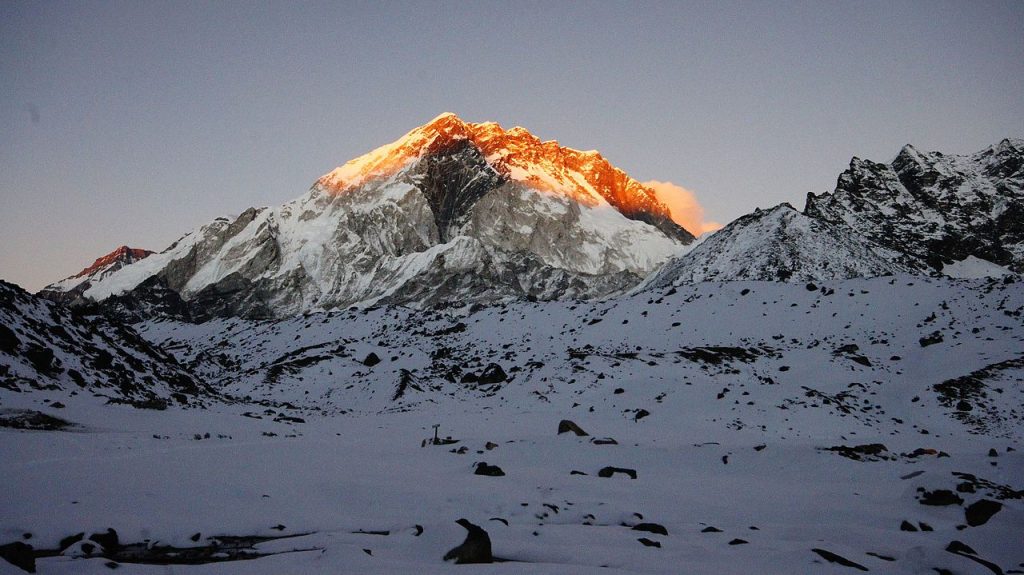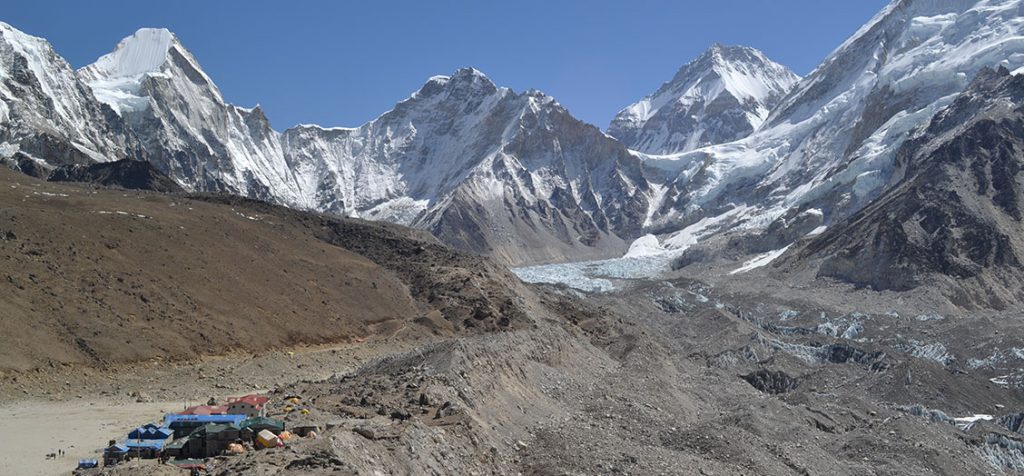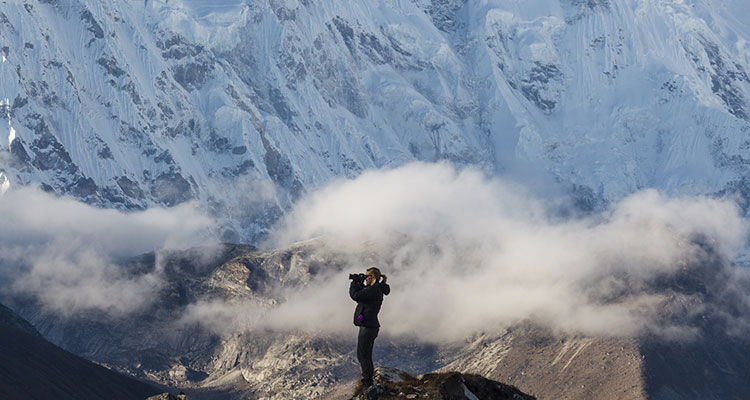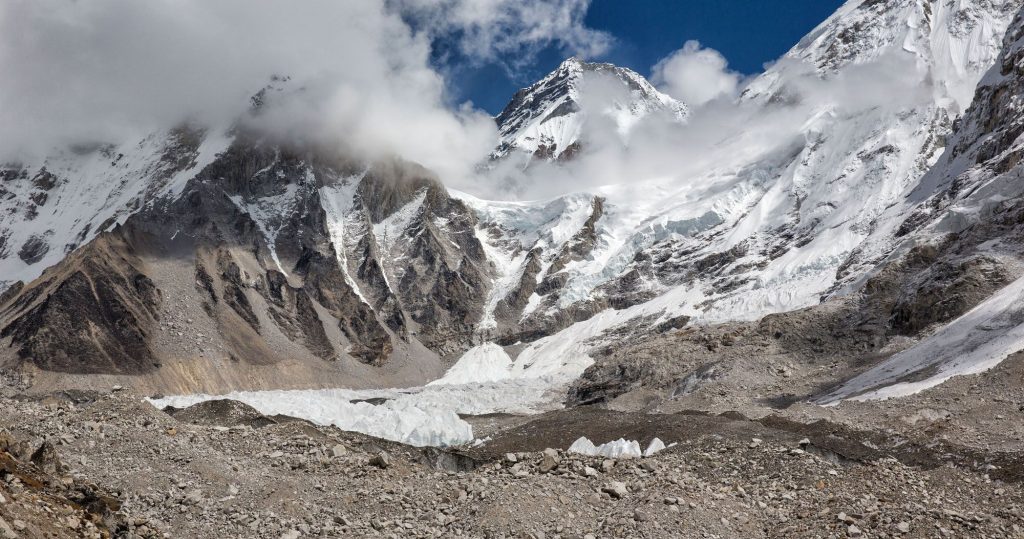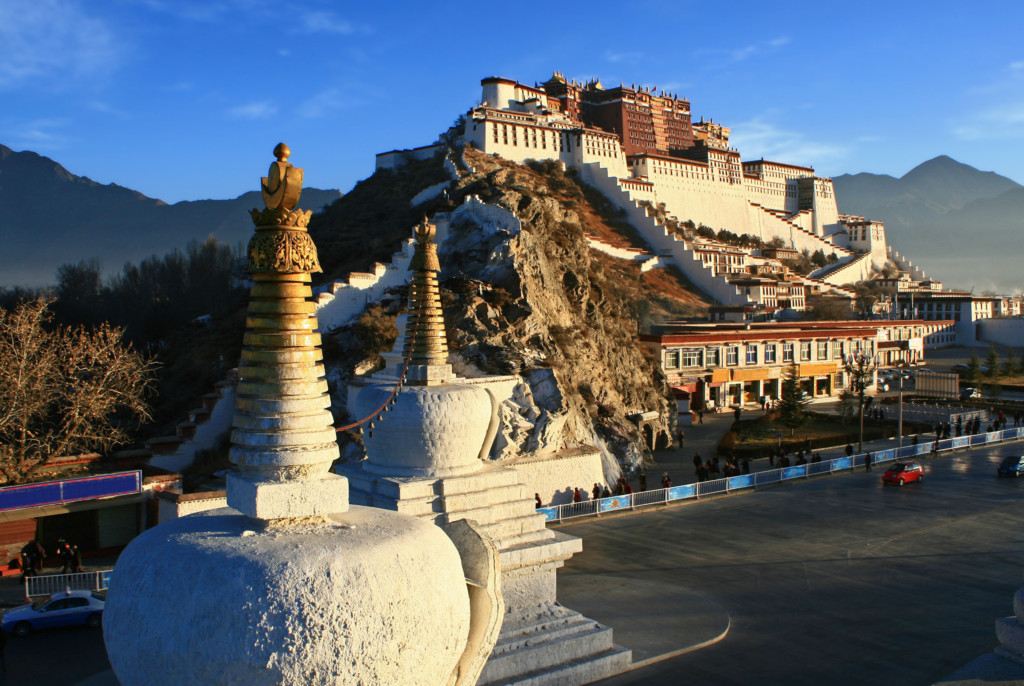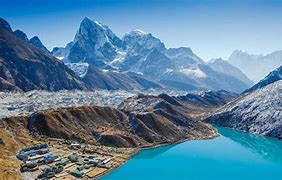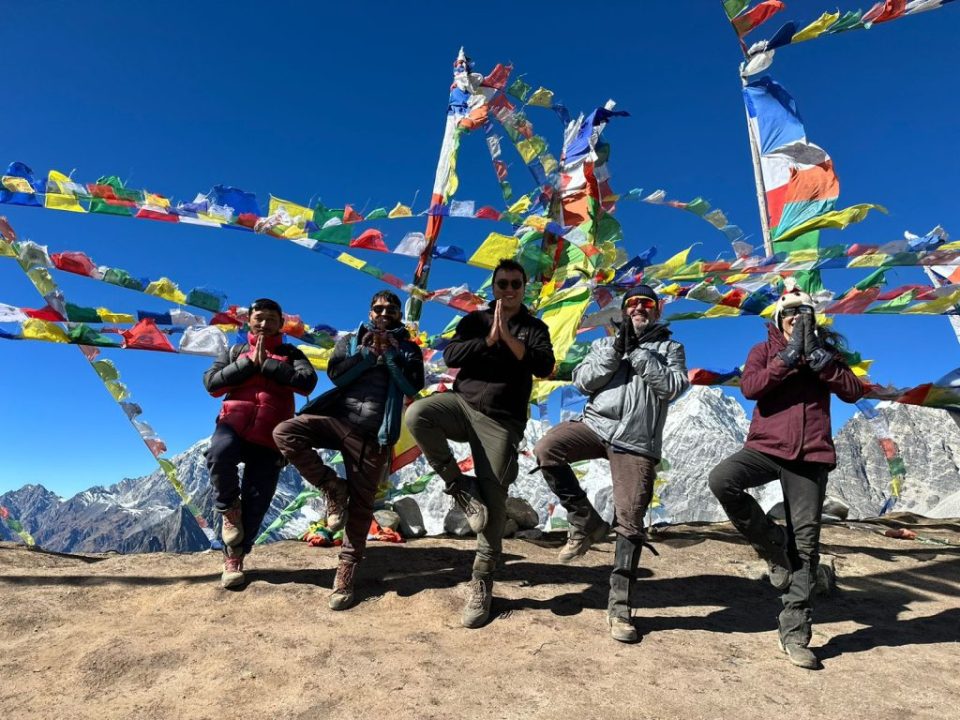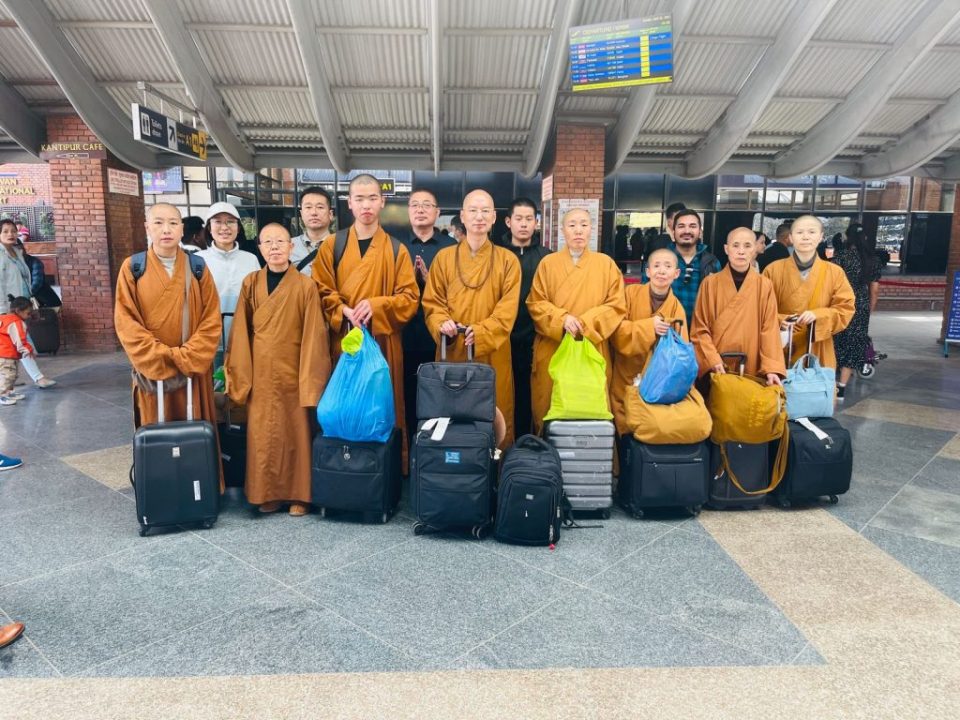Everest Base Camp Trek
Trip Introduction
Warping herself with the tallest peak and deepest gorge in the world, Nepal has become a trekker’s ultimate destination. As of early 1960, Nepal’s commercial trekking became renowned after many successful summits of Mt. Everest also known as Mt. Sagarmatha and Mt. Chomolungma. Trekking trails of Nepal’s eastern region are extremely popular for breathtaking views and remarkable adventure. Everest Base camp is in the northeast direction at about ~150 miles away from the capital of Nepal, Kathmandu. It is located at the center of the Khumbu region of eastern Nepal. Trekking trails of Everest base camp are the veins that connect you to the heart of the Himalayas and the peak of the world Mt. Everest. It is a wonderland for most of the trekkers which comes with everlasting glory.
The Khumbu valley has been the homeland of Sherpa. This trek is not just a trek; it is the journey above the clouds. Explore the tough trekking trails around the world’s tallest mountain for a jaw-dropping visit and a once-in-a-lifetime culture experience. Sherpa’s culture of hospitality has always been beloved among the tourist visiting Everest base camp. This is where you find yourself like a bird flapping your wing above the cloud. “The step to paradise” marked in every bend in the trail will awake you and the beauty of Mt. Everest will not let you blink your eyes. This Trek offers you to take a picture of beautiful forests, glacier moraines, mountains, and slopes.
Along with a panoramic view of Mt. Everest (8,848.68m/29,029 ft), the world’s highest peak. You can also take in the stunning views of peaks like Mt. Lhotse (8,516 m), Cho Oyu (8,201 m), and Mt. Makalu (8,436 m). Everest also has a diverse range of flora, fauna, and wildlife including musk deer, snow leopards, Himalayan Tahr, and red pandas. This trek also provides a breathtaking view of the world’s highest glacier, the Khumbu glacier (4,900 m).
Lukla (2,828m) is the starting point for the trek. Lukla is a major town in the Khumbu region. The road continues from Namche bazaar to the valley below Everest through the Imja Khola River. The trail leads to the destination by the traditional route via Lobuche and Gorakshep. After reaching the EBC, we then climb Kala Patthar, to explore the paranoic view of mt. Everest and the other Himalayas. For those who wish to enjoy their stay in the Himalayas, the Jugal holidays offer the greatest 14-day Base camp trek. Walking, Cardio and Hiking prepare you physically and mentally before planning a trek.
Itinerary
Departure from : Kathmandu, Nepal
Arrival On : Kathmandu, Nepal
Day 1
Arrival to Kathmandu and Transfer to the Hotel (1,400m)
| Days | Activities | Duration |
| 1. | Arrival at Kathmandu (1400m) | – |
| 2. | Fly to Lukla and trek to Phakding (2610m) | 3-4hrs |
| 3. | Trek from Phakding to Namche Bazaar (3440m) | 5-6hrs |
| 4. | Acclimatization day Namche Bazar | – |
| 5. | Trek from Namche Bazaar to Tengboche (3860m) | 5-6hrs |
| 6. | Trek from Tengboche to Dingboche (4410m) | 5-6hrs |
| 7. | Acclimatization day Dingboche | – |
| 8. | Trek from Dingboche to Lobuche (4940m) | 3-4hrs |
| 9. | Trek from Lobuche to Gorakshep (5164m) and hike to EBC (5600m) | 6-7hrs |
| 10. | Hike from Gorakshep to Kala Patthar (5550m) and trek to Pheriche (4371m) | 6-7hrs |
| 11. | Trek from Pheriche to Namche Bazaar | 6-7hrs |
| 12. | Trek from Namche Bazaar to Lukla (2860m) | 6-7hrs |
| 13. | Fly from Lukla to Kathmandu | 35min |
| 14. | Departure | – |
Upon arrival at TIA. You will be greeted and transferred to the hotel by our representative. Check-in the hotel. Get Fresh up. In the evening our guide for the trek will visit you and he will give you a short briefing about your trek. Dinner and overnight at Kathmandu.
Day 2
Fly from Kathmandu – Lukla, and trek to Phakding (2,610m)
After breakfast. Check out from the hotel and transfer to TIA for a flight to Lukla. The flight to Lukla from Kathmandu is just about 25min. The fly provides great views of Everest and its regions. On arrival to Lukla, we will meet and greet with our team and move towards Phakding. On the way to Phakding, we’ll get our Khumbu Rural Municipality Entrance permit from the Rural Municipality counter in the first village from Lukla. We will trek through the beautiful scenery of Khumbu valley with the smell of cherry blossom and rhododendrons, cross the suspension bridge over the Dudh Koshi River. We will be walking for 3-4hrs to reach Phakding. Dinner and overnight stay at the lodge.
Day 3
Trek from Phakding to Namche Bazaar (3,440m)
After breakfast, we will trek to Namche Bazaar for around 4-5hrs. It takes 2hrs from Phakding to Monjo and at Monjo, we will get our Sagarmatha National Park permits as we will be entering the UNESCO world heritage site i.e., Sagarmatha National Park. We then climb steeply to Namche, catching our first sight of Mt Everest from Topdanda. Ascending through the forest, crossing the suspension bridges including the famous Hillary Suspension bridge in Larcha dovan over the Dudh Koshi River we reach Namche Bazar. The largest trading village in Khumbu, the capital of Sherpa– Namche Bazaar, features a lively Saturday market. On arrival at Namche Bazaar. Check into the hotel. Dinner and overnight stay at hotel.
Day 4
Acclimatization at Namche Bazaar (Hike to Everest View Hotel)
This day we will take a rest at Namche Bazaar to make our body adapt to the environment and will not get altitude sickness in our further trek as we will be moving toward the higher altitude the next day. Have breakfast in the morning and explore around the Namche Bazaar. We can go for the morning hike to the Everest viewpoint over Namche to get the first look at Mt. Everest and Mt. Ama Dablam. Enjoy the amazing mountains views with sunrise. We can also set an acclimatization hike to the Sherpa Cultural Museum, Namche Monastery, National Park Office, Syangboche Airport, or to the Khumjung village. Explore around the café and restaurants, gear shops in Namche.
Dinner and Overnight stay at Namche.
Day 5
Trek from Namche Bazaar to Tengboche (3,860m)
Early morning breakfast and we will head towards Tengboche. We will follow the trail up the valley’s slope, high above the Dudh Koshi River. We can see the stunning view of Mt. Ama Dablam, Thamserku, and Kangtega, Mt. Everest with river valley below. On the way, we can find some Himalayan Tahr and Himalayan Monals. After the walk of 3-4hrs will have our lunch at a local tea house or lodge. After lunch, we will trek for another 2-3hrs through the pine forest to reach Tengboche. Tengboche is known for its historical monastery, the largest in the Khumbu region, and is also the birthplace of mountaineer Tenzing Norgay Sherpa. In the evening, you can join the daily worship celebration by monks in the Tengboche monastery. Dinner and overnight at quite a monastic village of Tengboche.
Day 6
Trek from Tengboche to Dingboche (4,410m)
This day we will trek to Dingboche. After breakfast, we will walk past the village of Pangboche hiking within the woody forest. After the walk of around 3hrs, we will reach Syomare where we will have our lunch. Boosting our power, we head toward Dingboche for another 3-4hrs.Dinner and overnight at Dingboche.
Day 7
Acclimatization at Dingboche
The altitude will hit you, as we will be moving to a higher altitude. We need to take a rest and recover our energy. We will stroll around the Dingboche village. We will go for the day hike over Chukung valley and return to Dingboche to have our lunch. Dinner and overnight at Dingboche.
Day 8
Trek from Dingboche to Lobuche (4,940m)
After the early breakfast, we will trek to Lobuche. Today we will walk for about 3-4hrs for our stay at Lobuche. It will be a little difficult to climb uphill for about 1hr but on reaching the top we will get all worth its panoramic view of Taboche (6367m), Ama Dablam (6856m), and Nuptse (7861m) mountains. The rest of the trail is pretty flat. We will walk past some amazing mountain sceneries, boulders, passes. We will have our lunch at Thukla. Dinner and overnight at Lobuche.
Day 9
Trek from Lobuche to Gorakshep (5,164m) and hike to Everest Basecamp (5600m)
After breakfast, we will start our trek early so that we can reach the Gorakshep on time and have sufficient time to hike to Everest base camp and return to Gorakshep. After the walk of 3-4hrs, we will reach Gorakshep and have our lunch. After lunch, we will hike to EBC. It is about 1.5hrs of an easy hike to EBC. You will get to see the huge, tallest mountain in the world, Mt. Everest (Mt. Chomolungma) right in front of your eye, and this feeling will be your once-in-a-lifetime best moment. After spending some time in EBC and clicking some photos we will return to Gorakshep. Dinner and overnight at Gorakshep.
Day 10
Morning hike to Kala Patthar (5,550m) (Sunrise view) and Trek back to Pheriche (4,371m)
This day will have our early breakfast in the morning and go for a hike to Kala Patthar to see the 360-degree view of the Himalayan where the Kala Patthar will look like a black diamond peering over the shoulder of the other mountains. The rays of sunrise strike the mountain and make the mountain glow golden. After the sunrise view, we will come down to Gorakshep and have our lunch. After lunch, we will trek towards Pheriche.
Dinner and overnight at Pheriche
Day 11
Trek from Pheriche (4371m) to Namche Bazaar (3440m)
Today will be the longest walk. We will walk for about 4hrs to reach Phungi Tenga and there we will have our lunch. After lunch, we will walk for another 3-4hrs to reach Namche Bazaar. Dinner and overnight at Namche Bazaar.
Day 12
Trek from Namche Bazaar to Lukla (2860m)
After breakfast, we will walk through the same trail to reach Lukla. We make our way to the Hillary Suspension Bridge, passing through several local villages along the way. We will be hiking for 5-6 hours covering 18.5km. On our arrival in Lukla, check-in at the lodge where we will stay for the night. Take some rest and have a wonderful evening on the last day in the Khumbu region with our team. Dinner and overnight at Lukla.
Day 13
Fly from Lukla to Kathmandu and transfer to the Hotel
After breakfast. Check out from the hotel and fly back to Kathmandu.On arrival, our representative will pick you up and transfer you to the hotel. Check into the hotel. Free for the day. You can stroll around the Kathmandu valley and have a night walk around the street of Thamel. Overnight at Kathmandu.
Day 14
Transfer to International Airport for final departure
This is the last day of your stay in Nepal. Our representative will drop you at the airport three hours before your flight’s departure time.
Route Map
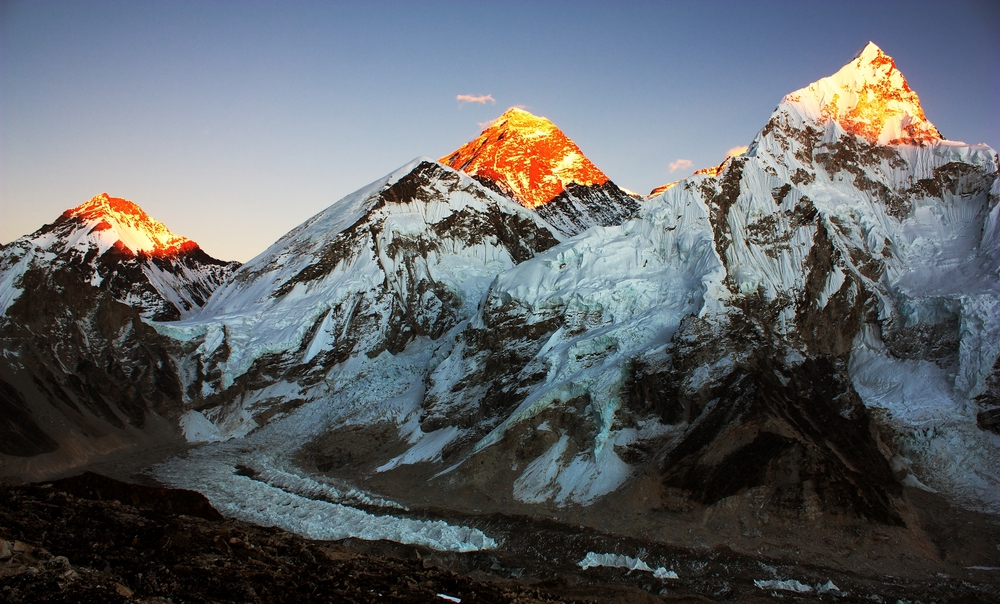
Altitude Map
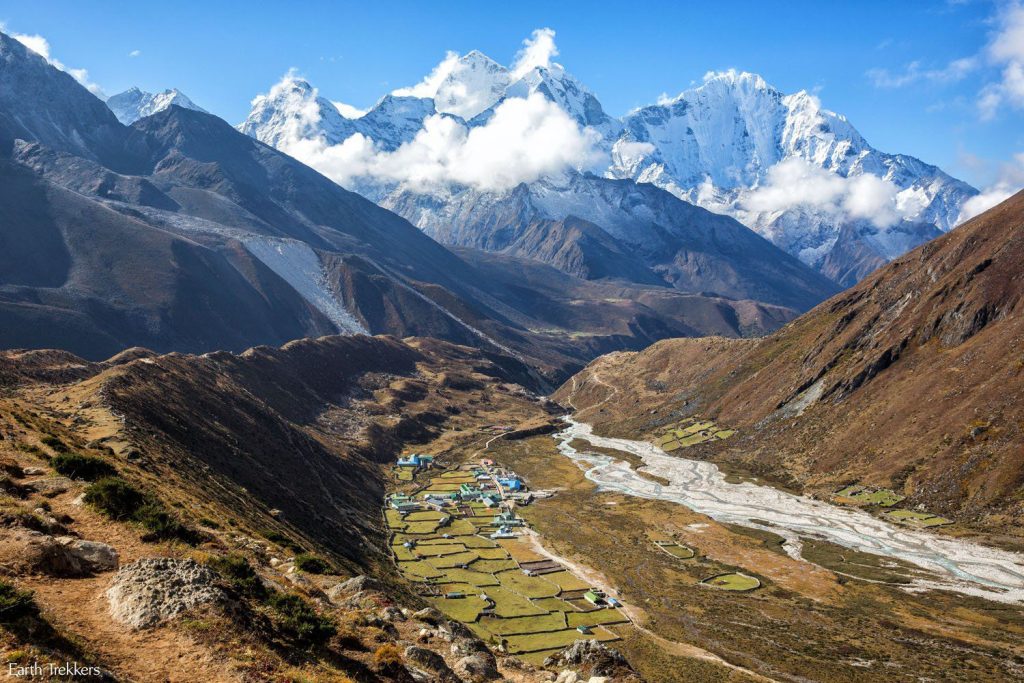
What's Included
- Arrival & Departure: Airport – Hotel transfer – Airport (Pick Up and Drop).
- Hotel Accommodation in Kathmandu: 2nights at Star categories hotel on twin sharing on bed and breakfast basis.
- Welcome Dinner and farewell dinner at Nepali culture restaurant in Kathmandu with Office’s Staff.
- Food & Lodging: 3 meals a day (BLD) along with accessible accommodation sharing at Hotel/Lodge during the trek.
- Permit: All necessary paper works: Sagarmatha National Park permit & Khumbu Rural Municipality entry fee.
- All government and local taxes if necessary.
- Trekking Map: Everest Region Trekking map.
- Member transportation: – Air Transportation: (Domestic Flight) Fly from Kathmandu – Lukla and while returning Lukla.
- Drinking: 2 liters of boiled water to carry on thermos per day per member.
- Guide: Government licensed Guide (English speaking) during the trek
- Porter: Porters (2 trekkers: 1 porter) up to 15kg during the trek.
- Insurance of guide and potter.
- Insurance: Insurance for all involved Nepalese staff during the trek.
- Comprehensive Medical kit.
What's Not Included
- Air Fare: International flight airfare (from and to Kathmandu).
- Nepal entry Visa fee: Visa fee per person 30 USD for 15 days, 50 USD for 30 days and to be applied for 90 days 125 USD.
- Extra night in Kathmandu: Extra nights’ accommodation in Kathmandu. In case of early arrival or late departure, early return from Trekking (due to any reason) than the scheduled itinerary.
- Personal Insurance: Travel and high altitude insurance, accident, Helicopter medical & emergency evacuation. *Mandatory
- Personal Expenses: Telephone calls, Internet, Toiletries, battery recharge, hot shower, laundry, soft drinks, beer, and any alcoholic beverages.
- Personal Equipment: Clothing, Packing Items or Bags, Personal Medical Kit, Personal Trekking equipment.
- Rescue Evacuation: Medical and emergency rescue evacuation costs if required. (Rescue, Repatriation, Helicopter, Medication, Medical Tests and Hospitalization costs).
Equipment List
What to bring ?
General
Tailor Your Holiday
Everyone has their own preferences in terms of destination, journey time, and budget. As a result, sticking to our plan isn't necessary. We will create a personalized itinerary for you that includes accommodations, transportation, meals, and tour guides. We guarantee you the best Tailor-made Package because this is your trip. You have the option to personalize it, as your liking. Let us Plan together to make your Vacation worth it.
Fixed Departure
Why Travel With Us?
Secure Online Payment, No Credit Card Fee
Travel with Locals. Support Locals
Lifetime Deposit
Private & Tailor-Made Trips
24/7 International Support
Support Local Communities & Donate to Charity
All Inclusive Price
Secure Online Payment, No Credit Card Fee
Trip Facts
| Country | Nepal |
| Duration | 14 days |
| Distance | 75m/ 120km |
| Highest Altitude | 5643m |
| Grade | Moderate-Difficult |
| Best season | Mar, Apr, May, Sep, Oct, Nov |
| Accommodation | Hotel, Lodge and Tea house |
| Highest point | Kala Patthar (5,550) and Everest base camp (5,364) |
| Meals | 13 dinners, 13 breakfast, 11 lunch |
| Attractions | Tengboche monastery, Namche Bazaar, Everest Base camp |
| Area | Everest Region |
Trip Highlights
- Have a beautiful flight from Kathmandu to Lukla.
- Trek to the Base camp of the world’s highest peak Mt. Everest.
- Hike through the UNESCO World Heritage Site of the Sagarmatha National Park.
- Enjoy the Everest region’s rich flora and fauna.
- Visit the Sherpa and Hilary Museums.
- Take in the greatest views of the Khumbu Icefall and Everest Base Camp.
- Visit the world-famous Tengboche Monastery in the Everest region.
- Enjoy the breathtaking sunrise and sunset views from the mountain.
Is this trek appropriate for you?
- The Everest Base Camp Trek is a difficult to moderate trek. If you are physically and mentally prepared, fit, and willing to do it, you can easily complete this trek.
- It is a trek to the summit of Everest, though several of the hills can be rough and seem never-ending at times.
- You’ll be on the route for 11 days. The trail can be walked for up to 8 hours, with a minimum of 3 hours.
- The walk is not technical in any way; there is no climbing or even scrambling, but the path is rocky and hilly, ending on moraine and then on the glacier itself.
- Each day, you will cover 400 to 600 meters in height while trekking. Kala Patthar, at 5,550 meters, is the highest point you’ll reach on your trek.
- The weather and remoteness of this trek, as well as dealing with the high altitude, require a slow pace and the need to stay hydrated.
The ideal season to travel
January:
Since there isn’t always a lot of snow in January, it’s possible to walk to Everest Base Camp, but the temperature will be freezing. Even in January, the daytime temperature in the Everest Base Camp region is around 8-12 degrees Celsius, which is manageable. Also, the temperatures at night are not particularly low.
February and March:
The off-season for trekking in Nepal continues in February and early March, with cold temperatures continuing and fewer visitors throughout the country. The weather in February and early March is cold, especially at night, but if you are well prepared, the clear views and uncrowded trails make this a desirable time to trek.
March and April:
With the weather warming up and rhododendrons blooming lower down the routes, late March and April are popular trekking months. The weather in the Everest region is great for trekking in late March and early April when the temperatures are still cooler. It’s the busiest month of the year on the EBC trails. Although the skies aren’t as clear in March and April as they are in the winter, the warmth to visibility ratio favors you. As the Everest region is the region of Buddhist culture, you can get to see the grand Buddha Jayanti celebration in the monasteries, which falls on the end of April.
Early May:
Since it is the transition period between the two season’s spring and summer, trekking to EBC in early May is still possible before the monsoon begins. At high altitudes, the risk of light showers increases, and you may need to prepare ahead of time for weather unexpected twists.
Late May, June, July, August, and early September:
During the rainy season, which lasts from late May to early September, it rains every day, making routes muddy with leeches and mountains high with clouds, resulting in landslides. During May -July you can see red, blue, purple, and yellow rhododendrons beyond the trek from Namche. For whichever better conditions nature lover, May, and June is the best time to trek. Although September isn’t as wet as July or August, rain should still be expected. September is a pleasant month to visit, with temperatures falling below freezing only at higher altitudes and at night. The most important festival of Sherpas, “Dumji festival” falls during the end of June or early July.
Late September to early November:
While September marks the start of Nepal’s busy autumn season, routes do not become very crowded until October. While October is the busiest trekking month in Nepal, November is a close second, with conditions that are even better. This time of year, especially from October to early November, is marked by clear skies and fresh air, making it ideal for trekking. Although the weather is cooler presently than it was in the spring, the days are still dry, and the sights are breathtaking. In late Oct or Nov the full moon, people in the Everest region celebrate the famous 19 days long colorful festival “Mani Rimdu” in Tengboche Monastery, but the last 3 days of this festival is only open for the public. Do the booking of flights and lodges in advance if you are planning to participate in this festival.
Late November to December:
The month of November is the driest of the year, the sky will be very clear so will get good mountain views during this time. As winter approaches, the trekking trails become deserted except for the most daring adventurers. Late November through December is also a wonderful season to go trekking, but temperatures will be cooler, falling well below zero at night. However, if you’re fully ready for extreme cold, December is a great season to walk to Everest Base Camp. On the plus side, as people try to avoid the cold, the trail to EBC will be considerably less crowded.
Flight to Lukla
Almost every trek of the Everest Region starts with a flight from Kathmandu to Lukla’s Tenzing Hillary Airport, a small single-landing runway airport high in the Himalayas. You can also fly to Lukla from Manthali Airport.
Lukla Airport is located at an elevation of 9400 feet (2,860 meters) bordered by high mountainous terrain on all sides, and this airport is a hub of trekking and shipping activity all year. Lukla Airport is also recognized as the world’s most dangerous airport. Almost every trekker and piece of equipment passes through this airport, which is only open when the weather is calm, and visibility is good.
- Flight to Lukla from Kathmandu airport is about 30-35 minutes. Flight to Lukla from Manthali is about 20-25 min. Flight to Lukla through helicopter takes 45 min.
- The maximum allowed luggage for the Kathmandu- Lukla flight is 15kg per person.
- All the flight to Lukla from Kathmandu or Manthai is operated from early in the morning from 6:30 am to 4:00 pm
- The departure time of the Lukla flight depends on the morning temperature and wind on a very day.
- It’s hard to figure out the potential that your Lukla flight will be canceled; if this happens, your ECB trek will be extended by a day or two; as a result, arrive prepared and save buffer days in case you miss your international departure.
- These can occur at any time of year but are more common during the monsoon season (late May to early September). It is quite difficult to forecast.
- You can fly to Lukla via. Helicopter. Cost of Helicopter is costly than the flight but have a bit more flexibility in their arrival to Lukla and can often make the journey in weather or visibility that a small plane would not be able to make by which you don’t have to extend your days of the trip.
Altitude sickness
Beyond 2500m (8000ft), Altitude sickness is a tricky enemy that may strike even the fittest trekkers. Due to the sudden ascent to higher altitude, the amount of breathable oxygen decreases at high altitudes that causing Altitude sickness. EBC is located at 5600m from sea altitude, where the atmosphere contains less oxygen, the wind gets stronger, and the air gets thin which makes it difficult in breathing.
So, you may suffer from different altitude sicknesses at the altitude of 5,550m (Kala Patthar) i.e., Acute Mountain sickness (AMS), High pulmonary edema (HAPE), High-altitude cerebral edema.
Early symptoms of altitude sickness
- Increased breathing.
- Increased urination.
- Headache and Restless sleep.
- Periodic breathing at night as a result of altitude.
- Dehydration.
Later symptoms
- Shortness of breath.
- Extreme fatigue.
- Respiratory failure.
- Cerebral edema.
- Coma.
This requires doing everything possible to prepare for altitude trekking. Make the most of your training time leading up to your Everest Base Camp trek. The stronger your cardiac fitness, the easier it will be for you to breathe during your walk. If you notice any of these symptoms while trekking, seek medical attention immediately.
There are, however, several other precautions you may take to reduce your risk of getting altitude sickness while trekking to Everest Base Camp.
- Trekkers can modify their bodies by walking and ascending gently, as our bodies need time to acclimate to the level of oxygen. High altitude trekking requires at least one day of acclimatization rest, and you should hike as high as possible before returning to a lower elevation for the night.
- A rise in elevation decreases oxygen levels as the air becomes very thin, and in the EBC trek, the increase in altitude also means less vegetation. Avoid the consumption of alcoholic beverages, cigarettes, and tobacco, which reduces the body’s water level.
- You should stay hydrated at all times because it is the best cure. Instead of drinking cooled water, drink warm water on your trek.
- Mentally prepare yourself and avoid negativity. Instead, enjoy the trek.
- Avoid sleeping pills to treat insomnia because they suppress breathing.
- If symptoms get worsen, do not travel any higher and consider descending to a lower altitude (approximately 300-600m) but if descend is not possible, a portable hyperbaric chamber (Gamow bag) can be used to simulate a lower altitude.
So, there you have it: everything you need to know about altitude sickness before trekking to Everest Base Camp. Please contact us if you have any questions.
Things to know before travelling to the Everest region
Drinking-Water
Especially for trekkers, it is very necessary to hydrate your body at a higher altitude than in lower elevations to avoid dehydration and altitude sickness. Lack of fluid can be the main hindrance during the trek. You should hydrate your body with at least 3-4 liters of water daily traveling (Tea, soup, or normal drinking water).
Throughout the trek, you will come across tap and spring water, but it is not safe to drink without purifying it. You can buy the plastic bottle water in the teahouses but get expensive as you climb in the higher altitude, and it causes pollutes the local ecosystem, therefore we recommend you to use a Reusable water bottle or water pouch favorable for both hot and cold water. During this trek, you may have to pay from 1$ to 5$ (at Gorakshep) for a sealed bottle of water.
Here are some ways that you can use to make the water drinkable.
- Boiled water
Boiling water is the best way to purify the water. As we are climbing to a higher altitude you need to boil the water for about 3-minute and season it with a pinch of salt before drinking. You can get free cold water in the teahouse but for boiled water, it cost around 1-2$ per liter and 3$- 10$ for a large pot.
- Purification tablets or electrolyte powder.
Purification tablets like chlorine or iodine tablets are commonly used tablets by trekkers to disinfect the water. 1 tablet is enough for a liter of water. It takes around 30 min for the tablets to dissolve and become drinkable. Water, purify by tablets may leave a taste in your mouth.
Electrolyte powder is another option. Electrolyte powder is a better way to purify water than tablets because electrolyte powder contains minerals such as salt, Potassium, Magnesium, which are important for your body during the trek.
- UV Light water purifier/ SteriPEN.
It is a simple, effective, and environment-friendly way to purify water. It kills the bacteria and virus within 10 sec by exposing them to ultraviolet light using Steripen, without changing the flavor of the water. This is a highly recommended method of purifying water.
Electricity and Internet facility at Everest region
Electricity facility.
Despite the challenging geography and weather conditions, the Everest region has been able to provide electricity and access to the Internet.
The lower Everest region (Lukla, Phakding, Namche, Pangboche) is hydroelectrically powered, thus you can enjoy free electricity and internet service but as you climb up to the higher part (Dingboche, Gorak shep, Kalapatthar, Everest base camp, Pheriche) of Everest Region, they rely on solar power electricity so there will be no charging socket in your room. There is a commonplace for charging usually in the dining area, and you will be charged extra from the use of electricity for charging devices on different bases (Per device and voltage of your device).
Charging a mobile phone costs 1.5$- 5$ per hour.
Internet Facility and Service
Internet and network facility is needed to contact your family, friends, and employee, to post updates and upload photos during the trek.
Everest link has been providing an internet facility throughout the Everest region.
You can purchase an Everest Link WI-FI card at the lodges and use the Everest Link hotspots to connect to the internet anywhere on the path within Everest Region.
Cost of Everest Link WI-FI card:
-10GB= NRP 2000/ 17$
-20GB= NRP 3000/ 25$
(Valid for 30 days)
NCell and NTC cellular service has been providing the network and internet facilities in Everest Region. You can buy the NCell or NTC sim card from the stores either in Kathmandu for 1$ or in Lukla and Namche Bazaar for 3$-4$. By taking data packages you can use the internet from NCell and NTC up to Tengboche. NTC network service is also available in Gorak shep.
NTC cellular service is most preferred over NCell. NTC provides good service and signal connectivity, in comparison to NCell.
| Buy NTC data package
Dial*1415# |
Cost of data package in NTC:
-14GB=7$ (Valid up to 28days -30GB=15$ (Valid up to 90 days) |
Check balance
Dial *1415# |
| Buy NCell data package
Dial *17123# and select. |
Cost of data package in NCell:
-15GB=10$ -25GB= 12$ (Valid up to 30 days) |
Check balance
Dial*101# |
Document needed to buy a sim card.
For foreigner = 1 passport size photo, Passport photocopy, or valid identity card.
For Nepali = 1 Passport size Photo, Photocopy of Citizenship.
Some useful tips to reduce the use of electricity.
- Extra batteries for the camera.
- Power bank with 5000-10000mAh.
- The solar charger and solar lamp (LuminAID Nepal lamp)
- As possible less usage of a device with low brightness, GPS, and WI-FI off.
Essential Backpack items for Everest Base Camp Trek.
The bag of a trekker also reveals the trekker’s level of experience. A good trekker should be a smart backpacker. You should be pre-prepared for the things that you need in the trek.
Here are some of the things that you need to take with you for the trek.
Travel documents
- Airline tickets with the itinerary.
- Travel insurance policy documents.
- Valid passport.
- Copies of passport.
- Passport-sized photos.
- Nepalese cash.
- Travel permits.
Clothing
- A pair of waterproof trekking shoes or hiking boots.
- A pair of flip flop slippers or running shoes.
- 2 sets of thermals (leggings and tops)
- 4-5 pairs of hiking long sleeve shirts or tops.
- Pairs of hiking shorts and pants.
- Fleece jumpers or a set of tracksuits.
- Good quality windproof down jacket.
- Lightweight waterproof rain jacket and pants.
- Neck gaiter, leg warmer, and packet of pocket hand warmers.
- 4-5 pairs of quick-dry socks, underwear, and sports bra.
- Pair of inner and outer gloves.
- Knitted Hat, sun cap, beanie, or bandana.
- Glacier Sunglasses and eyeshade.
Trekking equipment
- Waterproof trekking bag of 40-50 liter and Rucksack of duffel bag (if your backpack is not enough for all your item and need a potter).
- Reusable water bottle (both hot and cold) of at least 1-2litre.
- A sleeping bag and sleeping bag liner.
- Trekking stick/ poles.
- Crampons (If you are trekking in the winter season, Jan-Feb).
- LED Headtorch or solar lamp (LuminAID Nepal lamp is best as it is solar charged and very much portable)
- Stuff sacks, plastic bags.
- Plug adapter, Charging appliances, power bank, batteries.
- Pocket knife.
- Travel Wallet.
Toiletries
- Rolls of Toilet paper, wet wipes, and tissue.
- Medium-sized quick-drying towel.
- Toothbrush and toothpaste.
- Hand sanitizer.
- Sunscreen, lip balm, body lotions.
- Deodorants.
- Portable mirror.
- Shampoo and soap.
Personal First Aid Kit
- Antibiotics
- Painkillers, Paracetamol, ibuprofen, aspirin, Nicole
- Sanitary pads
- Bandage.
- Anti-inflammatory spray.
- Anti-Nausea tablets.
- Anti-diarrhea pills or power.
- Altitude sickness tablets.
- Water purifying tablets or electrolyte powder.
- Mosquito and Insect Repellent.
- Salt or anti-leech oil (If traveling in the rainy season, July- Aug)
- Earplugs
You can buy or hire trekking clothes and equipment in Kathmandu. If you are buying it, you have to allow an extra day for shopping; however, if you are hiring it, you must inform us in advance so that we can arrange it before you arrive in Kathmandu. This way you can reduce the weight of your luggage and save time and money.
Branded trekking clothes and equipment are available around the Thamel area at a reasonable price.
Note- Kathmandu- Lukla flight has a luggage allowance of 15 – 20 kg per person. For extra baggage, they charge 2$ – 3$ per kg. So, you can wear your trekking boots and jacket to reduce the weight. Have a hand carry bag for your passport, money, medicine, and pair of clothing.
Accommodation, Meal, and Transportation
Accommodation
We will accommodate in star hotel during our stay in Kathmandu. In Lukla, Namche Bazaar, and Tengboche we will stay in lodges. For the rest of the stop, we stay at teahouses.
Meal
During the trek, we will provide you three-time meals. You can choose from the given menu.
Breakfast– French toast, cornflakes, cereal, pancakes, Bread butter, eggs, oatmeal, porridge, tea, etc.
Lunch– Dal Bhat (Rice, vegetable curry, meat curry, Lentils, Tomato Chutney, Salad, Papad) Vegetable noodle soup, Chicken noodles soup, Garlic soup, Fried noodles, Fried rice, Thukpa, Fried potato, Mo: Mo, etc.
Dinner– Dal Bhat (Rice, vegetable curry, meat curry, Lentils, Tomato Chutney, Salad, Papad) Vegetable noodle soup, Chicken noodles soup, Garlic soup, Fried noodles, Fried rice, Thukpa, Fried potato, Mo: Mo, etc.
Besides these, there are a variety of other options of food. You can buy it from your pocket.
Transportation
By Bus- from Kathmandu airport to hotel at Kathmandu and vice-versa.
By Air- Flight to Nepal.
Flight from Kathmandu to Lukla and back.
Guide and Staff Arrangements
Throughout the trek, all your activities will be handled by our well-qualified and professional staff. We will do all the escorting. We are providing you with a highly experienced and licensed local Sherpa guide with fluent English speaking and has excellent communication skills. We will accompany you from Kathmandu and guide you to Everest Base camp. Each group of 4-5 trekkers will be assigned an assistant guide, as well as a porter for two trekkers (2*15kg =30kg). If your luggage weighs more than 15kg you will be provided a porter individually but you will be charged for 2 people.
All our lead guides, assistant guides, and potters are well professional and experienced. So, we hope for your respect and cooperation with us throughout the trek.
A typical day on the Everest Base camp
Every day will begin with the ringing of your alarm clock at 6 a.m. and a knock on your door from your guide with the invitation of breakfast. Get up, have breakfast, pack your backpack and get ready to start your day’s walk by 7 a.m. You’ll wander along the trail enjoying the scenery, clicking photos, creating memories, passing by other travelers, interacting with your guide, hearing each other’s stories.
Lunch will be served at a local teahouse in the late afternoon (1-2 am). Having lunch and an hour of rest, we will proceed to the day’s final destination as per the itinerary.
On arrival at the destination, check into your accommodation. Get freshen up and some rest. As every teahouse where we stay has a large common dining area with a wood-burning stove in the center, there you will get to meet other travelers. You can sit there, laugh at each other stories, play cards, sing songs, play music, and have a good time. This will help you forget all the tiredness of the day. Later in the evening, you will have your dinner together. After dinner, your guide will give a short briefing about the next day’s trek regarding when you must get up when we have to start our trek the next day, where we will stay the next day, how many hours we have to walk, and so on.
During this 11-day trek, we will walk a minimum of 3 hrs to a maximum of 7 hrs per day. During the acclimatization day, hike around the small peak or viewpoints. Sunrises view from Kala Patthar and hike to the Everest Base camp will be your lifetime memory. Every stop might not be iconic but these 14 days trek to Everest Base camp will give you unforgettable emotions. Your hard walk will be paid off on reaching the final destination with lifelong memories.
Nepal Tourist Visa and permits details
Visa procedure.
To travel to Nepal, you’ll need a tourist visa that is valid for the period of your stay in Nepal. Better, if you have a tourist visa valid for at least 2 months because anything can happen during the trip, and staying in Nepal after your visa expires would result in you paying a penalty. Apply for a visa at your nearest Embassy of Nepal or obtain an On-Arrival visa at immigration in Tribhuvan International Airport, Kathmandu. But it’s better to contact your nearest Nepalese Embassy.
Here are the documents that you need, to apply for the tourist visa.
- The Tourist Visa Application Form for Nepal (Fully completed online and printed)
- Original Passport with at least 2 blank pages and validity of at least 6 months.
- Photocopies of your passport’s information page.
- At least 2 recent passport-sized photos of yourself with white background.
- Proof of accommodation in Nepal.
- Valid travel and return flight tickets.
- A bank statement from the last 3 months with a minimum closing balance of NPR 2, 00,000.
- Receipt of the visa fee for Nepal.
Note: 15 days visa cost USD 30 but our trip is of 14 days. So, apply for 30 days tourist visa that costs USD 50 so that you can spend some more time in Nepal. For 90 days visa costs USD125.
Entry permits and Requirements
The Entry permits that you need for the trekking in the Everest region are;
| Trekking permits | Foreign Nationals | SAARC nationals | Nepali Citizens | |
| 1 | Khumbu Pasang Lhamu Rural Municipality Entrance Permit | NPR 2,000 per person (for the first 4 weeks)
NPR 2,500 per person (beyond 4 weeks) |
NPR 2,000 per person (for the first 4 weeks)
NPR 2,500 per person (beyond 4 weeks) |
NPR 2,000 per person (for the first 4 weeks)
NPR 2,500 per person (beyond 4 weeks) |
| 2 | Sagarmatha National Park Permit | NPR 3,000 per person per entry + 13% vat.
(Approx. 34$) |
NPR 1,500 per person per entry +13% vat
(Approx. 15$) |
NPR 100 per person per entry +13% vat
(Approx. 1$) |
Note– a Khumbu Rural Municipality Entrance permit must be obtained from the Rural Municipality desk at the Lukla checkpoint.
Permits for the Sagarmatha National Park can be obtained from the Nepal Tourism Board in Bhirkuti Mandap, Kathmandu, and from the Sagarmatha National Park entrance gate at Monjo. To save time, we recommend that you obtain a Sagarmatha National Park Permit in Kathmandu.
For more information about Trekking Permit here is the link.
(If you are traveling from a travel/trekking agency your agency will arrange all the Permits.)
Documents required to get the Trekking permit.
- Complete the form with your passport details.
- 2 Passport size photo.
- 2 Photocopy of passport valid for at least 6 months.
Travel Insurance
During the journey, you may encounter several unexpected incidents or losses. Trekking in Nepal is an adventurous and occasionally dangerous activity, especially at high altitudes. Trekkers must have travel insurance before visiting Nepal for trekking. During the trek to Everest Base camp, you may encounter a physical injury, illness, or an unexpected accident, and you will be responsible for all medical expenses and losses.
You need to choose an insurance policy that covers all of your possible risks from the start of your journey to your final destination. The following threats should be covered by your travel insurance:
- Cancellation of Domestic and International flights.
- Lost and stolen baggage and passport.
- Hospital and Medical expenses (physical injury, Acute Mountain sickness, Altitude sickness, sudden accident)
- Emergency rescue such as Helicopter.
- All high-altitude trek dangers up to 5,600m.
You need to choose your travel insurance wisely so that, in the case of such an incident, your travel insurance will cover the costs.
You can get your travel insurance in either your home country of Nepal.
Responsible Travel
Everest region is not only the gateway to Mount Everest but is also the homeland of Sherpa. Besides being called the mountainous region, the Everest region is also renowned for the Sherpa’s traditions, cultures, Tibetan culture, and eco-friendly environment. Majority of People in the Everest region practice Buddhism and Tibetan culture. The people worship Mt. Everest as ‘Mother of the world’ named by Chomolungma. You have to respect the local people, their culture, and religion and try to limit any harmful acts that will harm their culture and environment. You can learn some Nepali greetings words to greet them respectfully. We expect you to properly dispose of the plastic garbage (food wrappers, plastic water bottles). On the way to Everest Base camp, you might encounter many rare species (Lophophorus, Musk Deer, Himalayan Tahr, Blood Pleasant, Himalayan Monals, Martens, Tibetan Snowcock, Golden Eagle, and some others), you should avoid disturbing them. When visiting monasteries, you must follow the monastery’s norms. Ask for permission before entering and to click photos in any monasteries. Your one small negative impact can make a big impact on them and their daily life.
Your responsible travel will help Nepal achieve long-term sustainable tourism.
Everest Base Camp Trek
Trip Reviews
Lorem ipsum dolor sit amet, consectetur adipisicing elit, sed do eiusmod tempor



